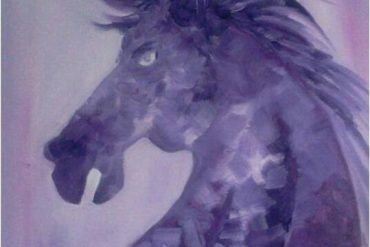Every year regions across India come to life to celebrate Dussehra, ten days of festivities to mark an ancient tale of good triumphing over evil.
In the Hindu faith, Dussehra stands for a great victory by Lord Rama – an avatar of the God Vishnu – over a demon king with ten heads named King Ravana.
The first nine days of Dussehra are called Navratri and people across India celebrate this period through a range of activities, including dressing up as characters from the epic Ramayana – the story of Lord Rama’s life.
It is a time for joyous song and dance, creative activities like learning how to make Dussehra posters using programs like Adobe Express and you can never forget the mouth-watering array of dishes and sweets that accompany the celebrations.
People across India all have their own unique ways of celebrating Lord Rama and Dussehra and it is important to understand what this period of festivities means to different people.
Northern India: The Dramatic Effigy Burning
In the northern parts of India, Dussehra is synonymous with the spectacular burning of colossal effigies of Ravana, the demon king.
In 2023, some of the largest effigies in history were created including the 70-feet towering effigy created by third-generation artisans Mohammad Munna and Subhan Ahmed from Rampur. It took four months to craft the effigy which was made from bamboo and shiny paper before it was set ablaze along with a symphony of fireworks.
Some regions need to get creative with their effigies, like the Rajrappa tribute that was installed at Central Coalfields Limited (CCL) residential colony ground. Because of inclement weather, this was made to be waterproof to ensure locals would be able to celebrate no matter the weather.
Southern India: The Sacred Ayudha Puja
While the north of India goes large with burning effigies, fireworks and loud celebrations for Dussehra, the occasion is more understated and solemn in the southern states.
Here, the occasion is called Ayudha Puja or Astra Puja and it is celebrated on the ninth day of Navatri. This is a time where locals express their gratitude for the modern conveniences that aid them every day, including their tools, instruments and vehicles. These tools are recognised for their role in shaping our lives and livelihoods and they are regarded as more than just physical objects, but as intellectual and spiritual extensions of ourselves.
During this occasion you will find locals in the southern states meticulously cleaning and servicing their tools and vehicles before decorating them with things like flowers, sandalwood paste, and vermilion, and offer prayers.
This practice imbues everyday objects with a sense of sacredness, fostering a deeper sense of gratitude and respect towards them.
In some regions, Ayudha Puja is celebrated along with Saraswati Puja, connecting the worship of tools with the goddess of knowledge and learning.
This tradition is particularly popular in South Indian states like Karnataka, Tamil Nadu, Andhra Pradesh, Telangana, and Kerala. Ayudha Puja is not just a religious observance but a cultural practice that highlights the inherent harmony between the material and spiritual aspects of life.
Ram Lila: The Epic Brought to Life
Ram Lila is a theatrical re-enactment of the Hindu epic Ramayana held across northern India, particularly in Ayodhya, Ramnagar and Benares, Vrindavan, Almora, Sattna and Madhubani.
The performances fuse a combination of various art forms including drama, dance, music, and narration which provide locals with plenty of entertainment but also some moral lessons along the way. Spectators can learn about a range of significant moments from the Ramayana, including Lord Ram’s birth, his marriage to Sita, their exile, and the climactic war between Ram and Ravana.
Interestingly, in traditional Ram Lila performances, the principal characters – Rama and Krishna – are always played by boys under age 14, as per tradition.
Immersion of Durga Idols: A Symbolic Farewell
The end of Dussehra is marked by a ritual that involves immersing a clay effigy of the Goddess Durga in water, symbolising her return to Mount Kailash after vanquishing the demon Mahishasura.
The backdrop of this formal ritual is one of extreme colour and vibrancy, with streets erupting with performers, song and dance. It is a widespread way to conclude Dussehra and is significantly marked in places like West Bengal, Assam, Bihar, Odisha, and Tripura where Durga Puja is the major festival.
Culinary Delights and Community Bonding
No festival would be complete without food and drink and Dussehra delivers a gastronomic treat for all that part. No matter where you are in the country you will find locals serving up a range of sweet treats and regional specialties prepared during this time. From crispy jalebis to savoury sabudana khichdi, the food reflects the diverse culinary traditions of India and adds to the festive spirit.
Traditions that Bind: Tika and Temple Visits
While the festivities, celebrations and party elements of Dussehra provide great joy to locals and visitors alike, there are also more solemn occasions to mark the 10-day period as well. You might find yourself being blessed with a tika by local elders, especially if you are a younger member of your family. These vermillion marks are a symbol of protection and good fortune. Many also visit ornately decorated temples dedicated to Lord Rama, praying for prosperity and participating in communal activities.
In conclusion, while Dussehra is celebrated in many ways across India, it is a significant occasion no matter where you take part. Whether you choose to go big and bold with effigy burnings or prefer a more respectful and solemn approach, there are different festivities that suit every person of every faith. Plus the food is amazing, no matter where you go.




